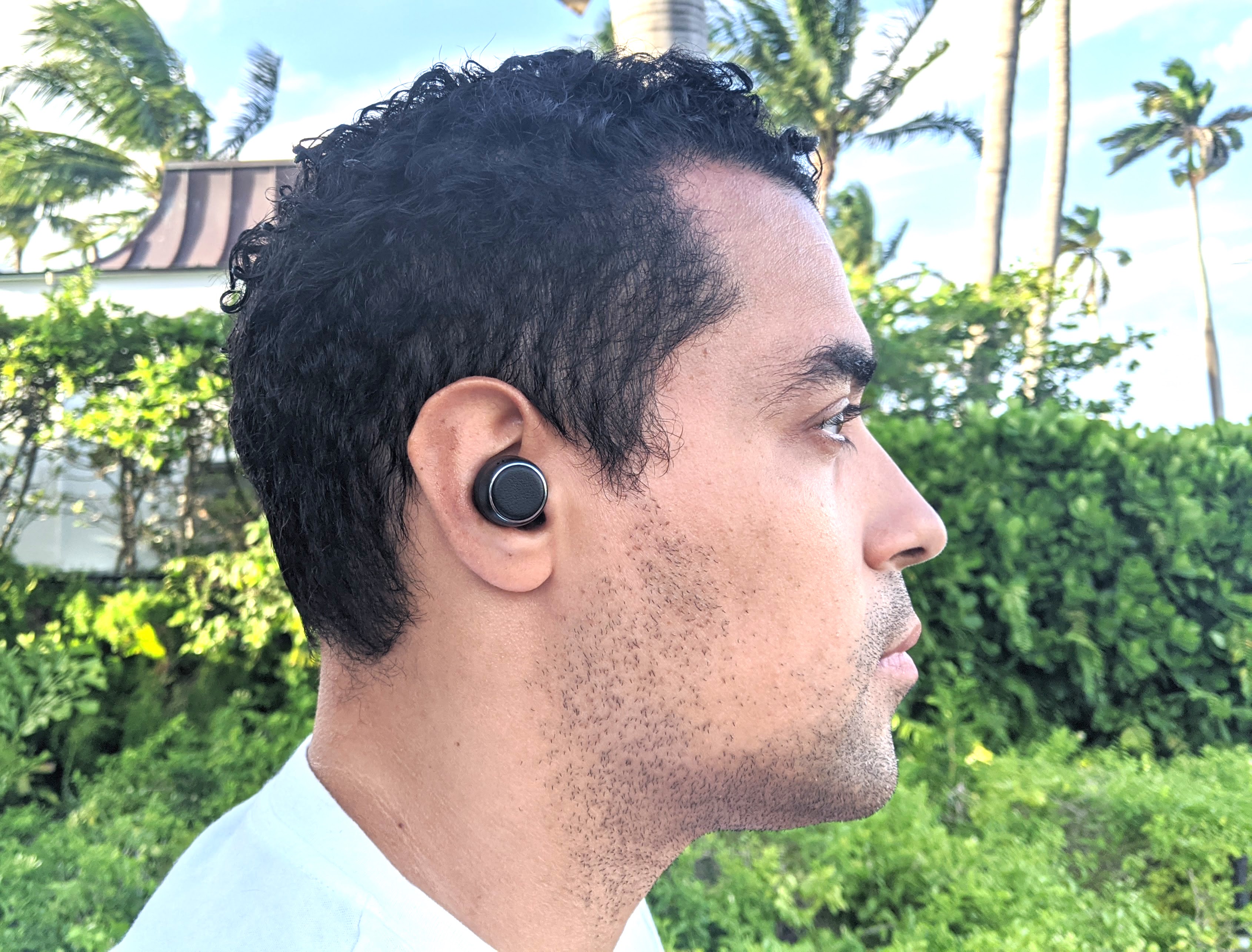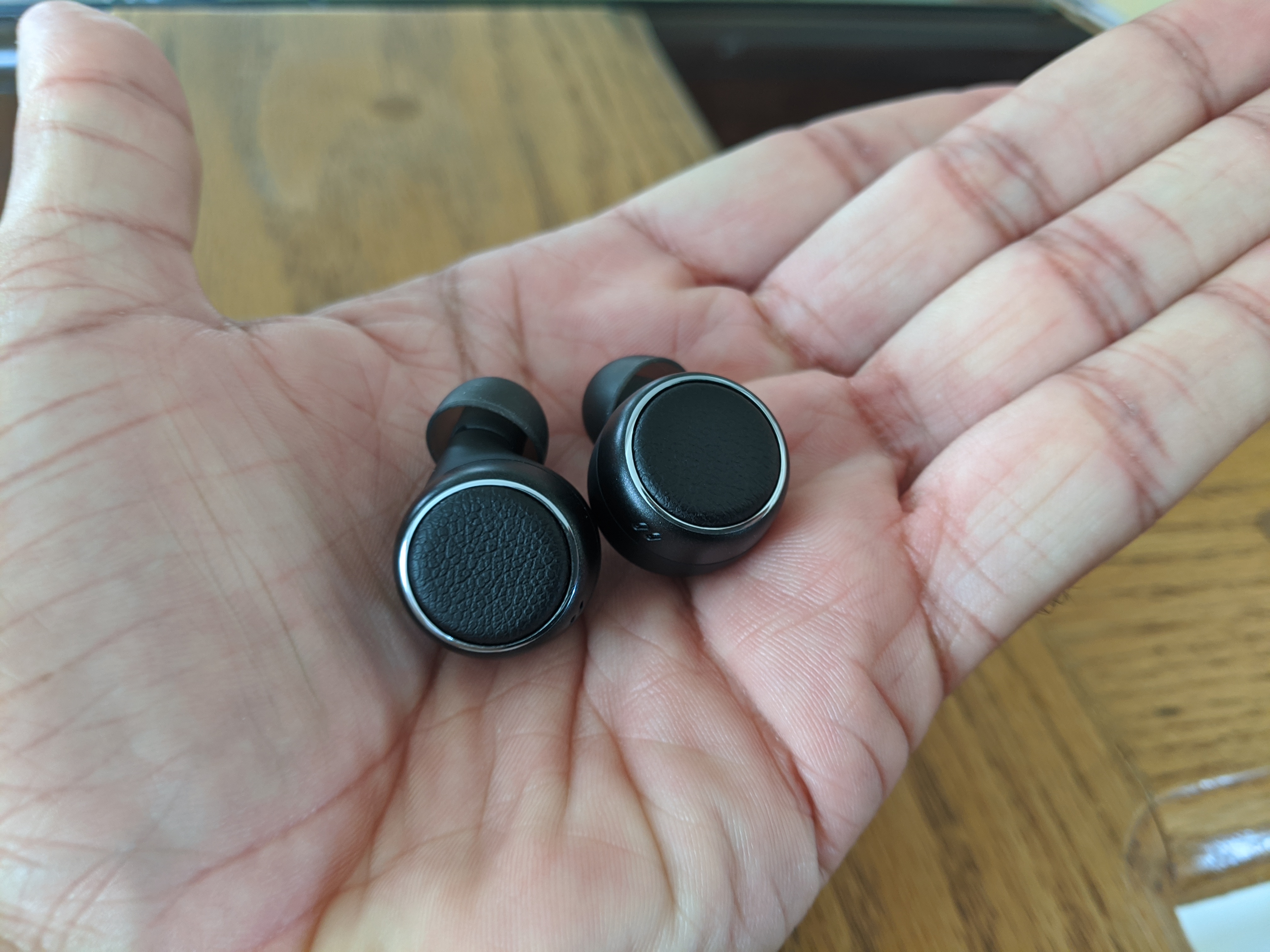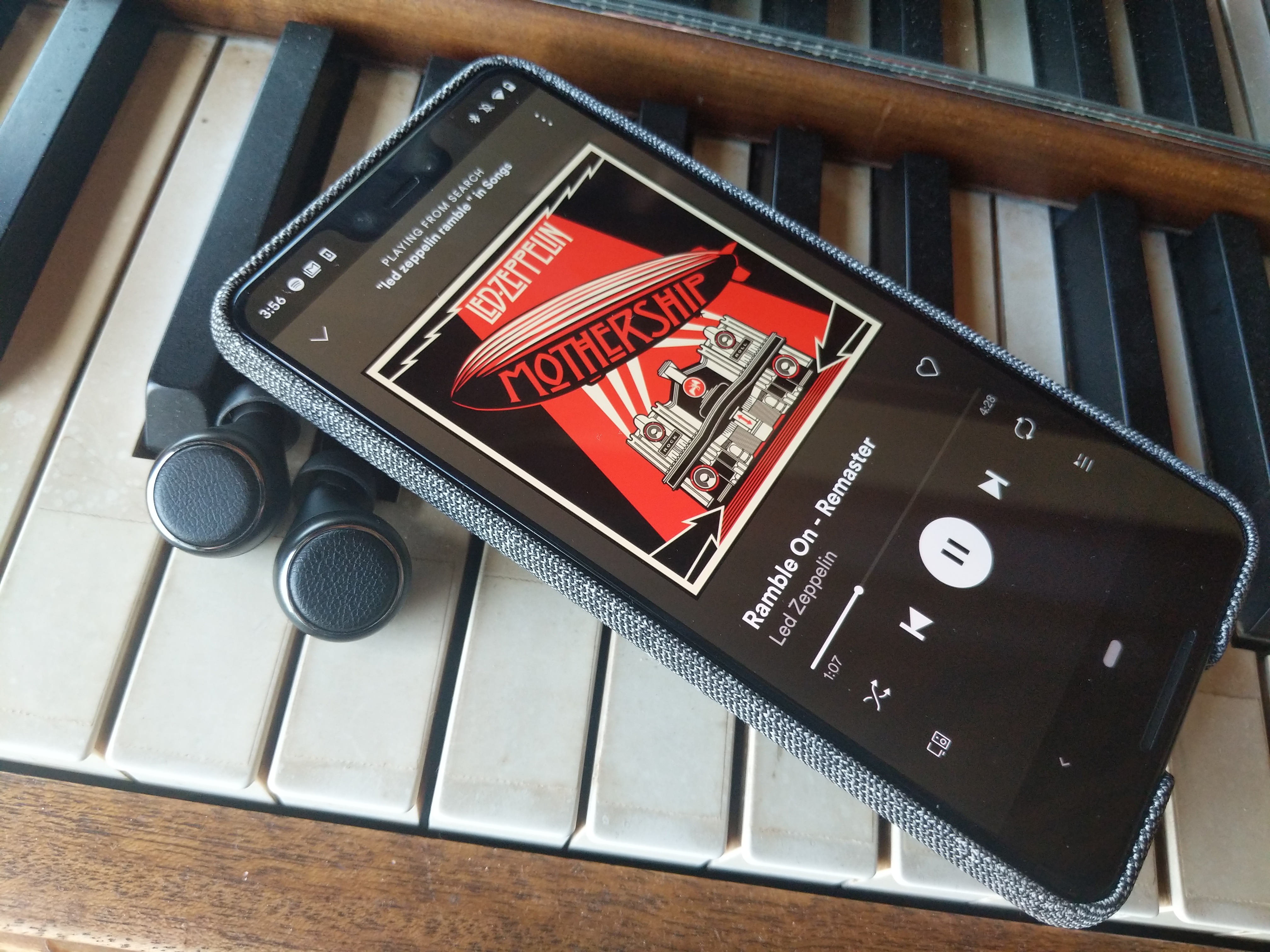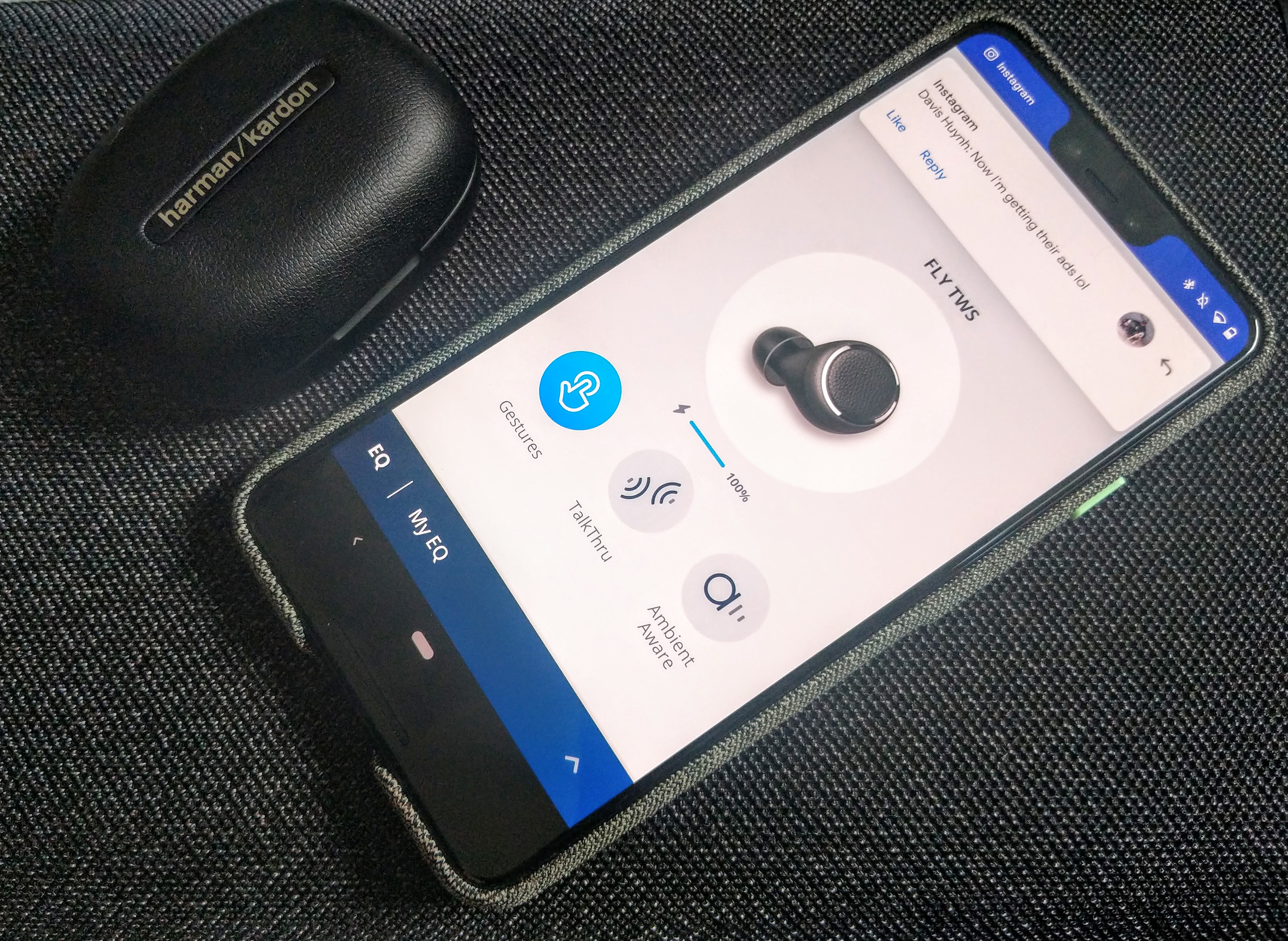Laptop Mag Verdict
When it comes to the Harman Kardon Fly TWS, premium sound and design comes at the cost of buggy performance.
Pros
- +
High-end, stylish design
- +
Excellent sound with personalized EQ
- +
Comfortable fit
- +
Great mic performance
Cons
- -
Too many bugs
- -
Poor connectivity
- -
Charging case holds less playtime than the AirPods case
Why you can trust Laptop Mag
Would you believe it has been five years since we saw a brand-new headphone launch from Harman Kardon? Man, how times flies. Since being acquired by Samsung back in 2017, the luxury audio brand has been MIA, but finally decided to show face at CES 2020 to introduce its newest release in the true wireless space: the Harman Kardon Fly TWS.
- Our expert picks for the best wireless earbuds, per budget and style
- Check out our Apple AirPods Pro review
- …and our Samsung Galaxy Buds Live review
These attractive buds sport HK’s signature black and silver color scheme, along with a chic and minimalist design that pays homage to the company’s popular releases of the past, including the Soho Wireless on-ear headphones. An effort was also put into engineering a genuine soundstage with crisp, detailed audio, which can be personalized via a companion app. Unfortunately, the Fly TWS’ gorgeous appearance and resonant audio aren’t enough to hide the buds’ several performance issues.
Harman Kardon Fly TWS: Price and availability
The Harman Kardon Fly TWS, which originally sells for $149.99, is currently on sale for $129.99 at major online retailers like Amazon or directly from Harman Kardon. At the moment, the buds only come in one color: Black.
What’s in the box?
Harman Kardon ships the Fly TWS with a charging case, three pairs of silicone ear tips in different sizes (Small, Medium, and Large), a USB-A to USB-C cable, and user manuals.
Harman Kardon Fly TWS: Design
Harman Kardon has a penchant for designing gorgeous, deluxe audio products, and the Fly TWS is no exception. The buds feature hard plastic and rubberized coating, which offers solid grip control to adjust or remove the buds. However, the scene-stealer is the leather touch panel with an aluminum inlay that exudes sophistication. Overall, the build quality is stylish and splendid, especially for sub-luxury (under $200) earbuds.

The Fly TWS comes IPX5-certified, so you get sweat- and water-resistant protection. I would be wary of getting the leather wet because it’s clearly the one detail you don’t want to be ruined or worn down over time. I also like how HK placed magnets on the inside of each bud, that way you can connect them when placed on a flat surface.

At 0.2 ounces, the Fly TWS are super lightweight and offer great comfort for lengthy listening. I wore them for 2 hours daily without feeling any pain or soreness around the concha. The angled sound port allows for seamless insertion into the ear, while the silicone ear tips produce a tight seal to keep the buds stabilized when moving around. Technically, the buds can be used for working out, but I wouldn’t recommend it.
Sign up to receive The Snapshot, a free special dispatch from Laptop Mag, in your inbox.

The charging case feels weighty despite only being 2 ounces, but I love the combination of soft-touch leather and plastic that HK employs, hitting that sweet spot between refined and sturdy. This also gives the exterior a caress-friendly feel; I found myself fiddling with it as much as anyone would a fidget spinner.
Harman Kardon Fly TWS: Touch controls
The control scheme is effective and practical, using multiple tap gestures to perform different actions. The left bud can call out/cancel any digital assistant notifications or enable TalkThru/Ambient Aware mode via swipe or two taps. The right is reserved for playback, skip back/forward track, answer/end calls, and volume. On-ear detection is also available to automatically pause music when taking off the buds.
How well do the controls work? About 50/50. While on-ear detection was very intuitive and the right bud was responsive to almost every command, the volume controls were a mess. Swiping to raise/lower volume would always be misinterpreted for play/pause, which became frustrating after a few songs, leaving me with little choice but to do it manually on my smartphone. The left bud was even worse and oblivious to the touch. It barely noticed taps or long presses, and swiping to enable the listening modes only worked once in a blue moon.

I also encountered bugs during testing. After playing a YouTube video and exiting the app, I tapped the right earbud to resume Spotify play and was met with an incessant beeping noise that wouldn’t stop until I unpaired the buds. That’s just one of many bugs.
The digital assistant met expectations, providing great speech recognition and ease of use. Alexa and Google Assistant are both built into the Fly TWS, though you can use Siri as well on iOS/macOS devices. Latency is usually an issue with Siri on MacBook, but I was surprised by how quickly the buds pulled up Apple’s AI Bot and registered requests. It was fun asking Google Assistant to grab NFL scores on opening day, hands-free, as well as to open music programs and read text notifications when my smartphone was several feet away.
Harman Kardon Fly TWS: Sound quality
HK’s track record with sound quality is up there with the likes of Bang & Olufsen and Sony. The Fly TWS is a solid addition to the company’s line of reputable audio products, delivering a lively, bass-rich listening experience that you can also fine-tune on the companion app.
The midrange is pushed to the sonic forefront and gives tracks proper treble representation. The plucked guitars on The Magnetic Fields’ “You Must Be Out of Your Mind” are serene and the distorted vocal layering is reproduced clearly. I loved how well mids and highs blended, delivering some of the best separation I’ve heard on a pair of wireless earbuds; every instrument was distinctive and well represented.

The low end is emphasized to create an energetic soundscape ideal for hip-hop and rock tracks. NaS’ “N.Y. State of Mind” maintained its boom-bastic vibes with some hard-hitting drum break action, and the enigmatic piano loop was prominent over the pounding production. I also became enamored with the acoustics on Led Zeppelin’s “Ramble On,” as the guitar tone and vocals were crisp and clean throughout the track. The Bang & Olufsen Beoplay E8 Sport offered similar performance.
Noise isolation is great too. Where the Beoplay E8 Sport let in a lot of ambient sound, the Fly TWS kept it minimal to high-frequency noises (e.g. sirens, whistles). There were times where I had the buds at mid-level volume and barely noticed my wife blasting IG videos on her iPhone. I would also be remiss to not mention the excellent job these buds did with leakage, limiting the amount of sound that escaped.
Harman Kardon Fly TWS: App and special features
The Harman Kardon Headphones app is basically the JBL Headphones app but with a different skin. Both share the same design and features. The good news is that the app is user friendly and has plenty of personalization, be it the controls or sound output.
Let’s start with the app’s killer feature: the built-in EQ. You can tweak the frequency levels to create your own sound profile. It’s simple to use, but for those who might find it too technical, HK has three presets built into the app that you can select: Jazz, Vocal, and Bass. Each one caters to a specific genre, but I found the default signature lent itself well to all music selections.
Like the JBL Live 300 TWS, the Fly TWS comes with Ambient Listening and TalkThru modes, each allowing a certain amount of ambient sound to enter the soundstage and hear what’s happening around you. The latter is the better of the two, bringing the volume down to about 10%, so you can enjoy open, clear conversations with people while music continues to play in the background. Truth be told, Ambient Aware sounded exactly the same as having it turned off.

Other notable features include Find My Buds and toggle controls for the listening modes and digital assistant, along with an auto-off setting to place the buds in sleep mode when inactive.
Sadly, the app is riddled with bugs. I couldn’t perform the latest firmware update without force-closing the app at least three times due to connection issues. When I did get a chance to download it, the updated version presented newer issues. It wasn’t allowing me to enable either listening mode or to save the control scheme I set up for the left earbud.
Harman Kardon Fly TWS: Battery life and charging case
Harman Kardon rates the buds' battery life at 6 hours on a full charge. By comparison, this is longer than the AirPods Pro (4.5 hours), but shorter than other luxury models, like the Sennheiser Momentum True Wireless 2 (7 hours). It’s really about 5.5 hours when factoring in high volume and listening modes, granted, the playtime is sufficient for daily commutes and moderate listening.
I used the buds for 1.5 hours daily for nearly 4 days before tossing them into the charging case. Quick charging is clutch, and one of the more powerful charging solutions in the category, generating 1 hour of playtime on a 10-minute charge.

It’s basically a rule of thumb at this point that any charging case rated lower than the AirPods (24 hours) is below average. The Fly TWS falls into that category, holding 20 hours total, which only gives users about 2 to 3 extra charges on the go. That’s fine if you’re planning on using the buds during the workweek, but it’s not ideal for road warriors. Also, wireless charging would have been greatly appreciated.
Harman Kardon Fly TWS: Call quality and connectivity
This is one of HK’s better calling headsets. The mics are impressive and pick up vocals well while blocking a decent amount of ambient sound. My wife complimented how loud my voice sounded and understood every sentence I spoke. The buds perform even better indoors. A few of my friends thought I was speaking directly into my smartphone and one client was surprised by the level of clarity these buds produced during our Skype chat.

If only Bluetooth 5.0 was as convincing. The technology does not live up to its standards on the Fly TWS. The initial pairing process is very frustrating and requires several attempts in order for the product to show up on the available devices list; I spent about 5 minutes trying to pair the buds to my MacBook Pro and 15 minutes on my Google Pixel 3XL.
Attempting to pair through the app wasn’t any better. Once achieved, the buds would instantly re-pair to recognized devices. However, the left bud occasionally dropped connection. Wireless range was short too, with sound stuttering around the 25-foot mark.
Harman Kardon Fly TWS: Verdict
The Harman Kardon Fly TWS is an enticing purchase for anyone who values fancy aesthetics and audio, but only if it's on sale. These are some of the hottest-looking buds out there and the charging case is just as attractive despite its lower-than-average battery life. Sound is the product's greatest attribute, blending vocals and frequencies superbly to produce dynamic results. I also felt the mics deserve recognition, as they worked surprisingly well for phone calls and digital assistant use.
But there’s no denying that the Fly TWS has a major bug problem. If it’s not the controls, then it’s the app or issues with pairing. You’re bound to spend a lot of time troubleshooting to get these buds functioning properly. On top of that, it’s disappointing to see total battery life rated lower than the AirPods, especially when its sibling brand, JBL, has models that offer up to 32 hours.
To look past these shortcomings may be asking a lot. If it isn’t, and you’re on the hunt for relatively affordable wireless buds that look as good as they sound, then the Fly TWS might be a suitable option.
Alex Bracetti writes about all things related to audio at Laptop Mag. From insightful reviews of Sony earbuds to hands-on experience with the Beats Studio Pro, Alex covers everything you need to know in order to buy the best pair of headphones or earbuds. Alex has also written about speakers and audio apps. Outside of Laptop Mag, Alex's work has appeared in our sister site Tom's Guide.

